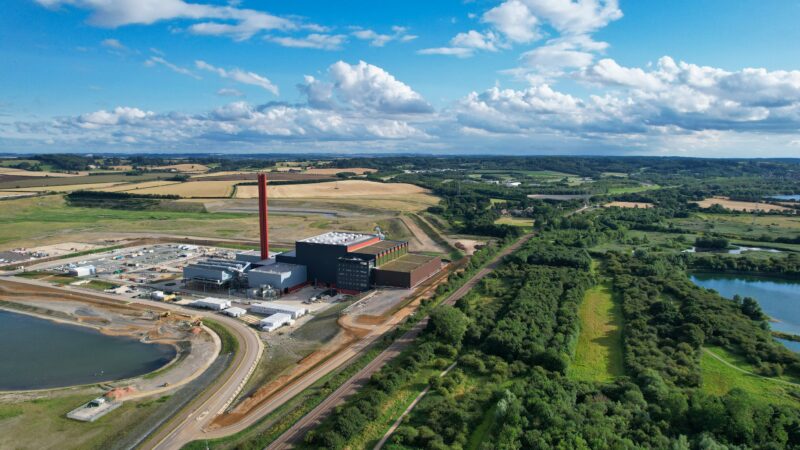Your guide to understanding supply chain management

Ioana Neamt

In today’s global economy, effective supply chain management is crucial for businesses aiming to maintain competitiveness and ensure customer satisfaction, regardless of the industry they operate in.
But what does it take to ensure that your supply chain works like a well-oiled machine? It’s time to get down to the core concepts, phases, types, and frequently asked questions about SCM, providing a comprehensive overview suitable for businesses seeking to optimize their supply chains. So, without further ado, let’s get right into it.
What is supply chain management and why is it important?
Supply chain management, otherwise known as SCM, involves the coordination and management of a wide network of interconnected businesses working to provide goods and services to end consumers. It encompasses the entire process, from raw material procurement to the delivery of the final product to the consumer, ensuring efficiency, cost-effectiveness, and customer satisfaction.
Supply chain management is a critical focus for any business, for reasons that directly impact a company’s bottom line and overall performance.
- Efficiency — Streamlined SCM processes reduce waste, lower costs, and improve speed. By managing resources efficiently, businesses can minimize production delays and optimize their inventory levels.
- Customer satisfaction — Ensures timely delivery of quality products. Effective SCM ensures that customers receive their orders on time and in good condition, which enhances their overall experience and loyalty.
- Competitive advantage — Enhances a company’s ability to respond to market changes and demands. Companies with agile and responsive supply chains can better meet changing customer preferences and market conditions, providing a significant edge over competitors.
- Risk management — Identifies and mitigates potential disruptions in the supply chain. Effective SCM strategies include contingency planning and risk assessment to address potential issues such as supplier failures, natural disasters, and geopolitical tensions.

How does supply chain management work?
Supply chain management integrates various functions and processes, from product development and sourcing to production and logistics. The process can involve multiple stakeholders, including suppliers, manufacturers, distributors, and retailers, all working towards a common goal — delivering the final product to the consumer efficiently and effectively.
SCM consists of several stages, including procurement, production, distribution, and logistics, and each stage comes with its unique set of challenges. Effective SCM requires strategic, careful planning and seamless operational execution to ensure that each link in the chain functions smoothly and efficiently.
You know that show, ‘The Weakest Link’? That’s exactly what you’re trying to avoid in the SCM process. The goal is to minimize costs, reduce waste, and meet customer demand promptly and accurately.
- The process begins with the sourcing of raw materials. Companies must identify reliable suppliers, negotiate contracts, and ensure the timely delivery of inputs.
- These materials are then transported to manufacturing facilities, where they undergo production processes to become finished goods. Production planning is crucial here, involving decisions on what to produce, in what quantities, and when. Advanced techniques like just-in-time (JIT) manufacturing aim to reduce inventory costs by aligning production closely with demand.
- Once products are manufactured, they must be distributed to various locations. This involves warehousing, inventory management, and logistics. Warehousing strategies, such as cross-docking, can speed up the distribution process and reduce storage costs. Logistics encompasses the transportation of goods, where choices between different modes (e.g., road, rail, air, sea) affect speed and cost.
- Throughout the supply chain, technology plays a pivotal role, with tools like enterprise resource planning (ERP) and transportation management systems (TMS) providing real-time data and analytics to support decision-making and enhance supply chain efficiency.

The key components of supply chain management
Effective SCM is broken down into several key phases, each critical to the overall success of the supply chain. These phases ensure that each step, from planning to returns, is optimized for efficiency and effectiveness.
- Planning — This involves forecasting demand, planning inventory levels, and scheduling production to ensure that supply meets demand efficiently
- Sourcing — Selecting suppliers and managing procurement processes to obtain raw materials and components needed for production
- Manufacturing — Transforming raw materials into finished products through various production processes, while maintaining quality standards
- Delivery — Managing logistics, transportation, and distribution to ensure timely delivery of products to customers
- Returns — Handling the return of defective or unwanted products, which involves reverse logistics and customer service
1. Planning
Planning is the foundational phase of supply chain management, setting the stage for all subsequent activities. It can be time-consuming and requires strategic decision-making to align resources with business goals. This is probably the most important step in the process, setting the stage for success and figuring out how each part fits into the bigger picture. The planning phase can also be broken down into phases, as you can see below.
- Demand forecasting — Predicting customer demand to align production and inventory levels. Accurate demand forecasting helps avoid overproduction and stockouts, ensuring that products are available whenever customers need them.
- Supply planning — Determining the necessary resources and suppliers to meet demand. This includes selecting reliable suppliers, negotiating contracts, and planning for material requirements.
- Production planning — Scheduling manufacturing activities to ensure timely product availability. Effective production planning minimizes lead times and maximizes resource utilization.

2. Sourcing
Sourcing is the process of identifying and acquiring the raw materials and components necessary for production. This phase focuses on building strong supplier relationships and ensuring the quality of inputs, as follows:
- Supplier selection — Choosing reliable suppliers based on quality, cost, and delivery performance is key to effective SCM. A thorough supplier evaluation process ensures that selected suppliers can meet the company’s standards and requirements in a timely manner.
- Procurement — This stage includes procuring raw materials and components needed for production. Effective procurement strategies include negotiating favorable terms, managing purchase orders, and maintaining optimal inventory levels.
- Supplier relationship management — Building and maintaining strong relationships with suppliers is crucial to ensuring consistent quality and supply. This involves regular communication, performance monitoring, and collaborative problem-solving.
3. Manufacturing
Manufacturing is the phase where raw materials are transformed into finished products. This stage involves a series of production processes that must be managed to ensure efficiency and quality.
- Production management — Overseeing the conversion of raw materials into finished products. This includes managing production schedules, workforce, and equipment to optimize output.
- Quality control — Ensuring products meet required standards and specifications is essential to keeping customers satisfied. This is achieved by implementing rigorous quality control measures to help prevent defects or errors in the production process.
- Lean manufacturing — Implementing techniques to minimize waste and improve efficiency is a must-have in this age of sustainability. Lean manufacturing principles focus on continuous improvement, reducing non-value-added activities, and optimizing workflows.

4. Delivery
This next phase in the supply chain management process consists of managing the logistics of transporting and distributing products to customers. This phase is critical for ensuring timely and accurate order fulfillment. At the same time, it’s also one of the hardest phases to control, since external factors such as extreme weather, traffic delays, and other unforeseen events can also come into play.
- Logistics — This part of the process is all about managing the transportation and warehousing of products. Effective logistics management ensures that these products are stored and moved efficiently, reducing delivery lead times and costs.
- Distribution management — Ensuring products reach retailers or customers on time. This includes coordinating with distribution centers, managing inventory levels, and optimizing delivery routes.
- Order fulfillment — Processing and delivering customer orders efficiently. Efficient order fulfillment processes enhance customer satisfaction and loyalty.
5. Returns
Returns management, or reverse logistics, handles the return of defective or unwanted products. This phase, often overlooked, is critical to establishing trust and building customer loyalty, focusing on ensuring a smooth and satisfactory return process for customers.
- Reverse logistics — Handling the return of defective or unwanted products. Effective reverse logistics processes include managing return shipments, inspecting returned items, and processing refunds or replacements.
- Return processing — Managing the restocking, refurbishing, or disposal of returned items. Proper return processing helps minimize losses and recover value from returned products.
- Customer service — Addressing customer concerns and ensuring satisfaction with the return process. Providing excellent customer service during returns can enhance customer loyalty and improve the overall brand reputation.

Types of supply chain management
There are various types of supply chain management strategies, each tailored to specific business needs and market conditions. Understanding how each of these strategies works can help you choose the most appropriate approach for your specific operations, or you can deploy a mix of these to create your own approach.
Lean supply chain management
Lean supply chain management focuses on minimizing waste and optimizing processes to increase efficiency. This approach is particularly useful in industries where cost control and resource optimization are critical.
- Minimizing waste — Lean principles aim to eliminate non-value-added activities and reduce excess inventory. This results in lower costs and improved process efficiency.
- Just-in-time (JIT) inventory — Utilizing JIT inventory systems works to reduce excess stock. By synchronizing production with demand, businesses can minimize inventory holding costs and reduce the risk of obsolescence.
Agile supply chain management
Agile supply chain management emphasizes flexibility and responsiveness to market changes. This approach is ideal for industries with volatile demand and frequent new product introductions, where you need to be flexible and adapt quickly to changing market conditions or shifts in demand.
- Flexibility — Agile supply chains can quickly adapt to changes in demand and market conditions. This allows businesses to respond rapidly to customer needs and capitalize on new opportunities.
- Market responsiveness — Emphasizing quick response to market changes and customer preferences. Agile supply chains can introduce new products faster and adjust production schedules to meet shifting demand.
Green supply chain management
Green is the new lean — you heard it here first, folks. Green supply chain management integrates environmental considerations into SCM processes, which is something that many customers look for nowadays. This approach aims to reduce the ecological footprint of supply chain activities and promote sustainability.
- Sustainability — Green supply chains focus on reducing waste, emissions, and resource consumption. This includes adopting eco-friendly practices such as recycling, energy-efficient transportation, and sustainable sourcing.
- Corporate social responsibility (CSR) — Incorporating CSR initiatives into supply chain activities can boost a company’s reputation and help you meet the growing demand for environmentally responsible products.

Global supply chain management
Global supply chain management involves managing supply chains that span multiple countries and continents. If you deliver products to different parts of the world, then you know how tricky it is to effectively coordinate across different regulatory, cultural, and economic environments.
- Cross-border coordination — Managing supply chain activities across different countries and regions can be a complex affair. It often includes navigating trade regulations, customs procedures, language barriers, and international logistics.
- Cultural and economic considerations — Adapting to diverse cultural and economic environments. Global supply chains must account for variations in consumer preferences, labor costs, and market conditions, and always keep an eye on shifting trends.
What is supply chain resilience?
Supply chain resilience refers to the capacity of a supply chain to anticipate, prepare for, respond to, and recover from unexpected disruptions, such as Covid-19. Resilient supply chains have the ability to withstand various shocks, such as natural disasters, geopolitical tensions, pandemics, or economic fluctuations, and quickly resume normal operations. They are designed to be flexible and easily adaptable, often incorporating strategies such as diversified supplier bases, buffer stock inventory, and contingency planning to mitigate risks and maintain continuity.
The importance of supply chain resilience has been highlighted by recent global events, like the Covid-19 pandemic, which triggered significant disruptions across industries worldwide. A resilient supply chain helps companies maintain service levels, protect revenue streams, and sustain customer trust during times of crisis. Additionally, it enables businesses to navigate uncertainties more effectively, reducing downtime and operational losses. By investing in resilience, organizations can not only safeguard against immediate disruptions, but also enhance their competitive advantage and long-term sustainability in an increasingly volatile and interconnected global market.

What is the future of supply chain management?
In this increasingly fast world with shortened attention spans, supply chains must make responsiveness and customer satisfaction their top priorities. When consumers want a product, they want it delivered, well, yesterday, and they will look for companies who can deliver that product without delays or errors in a timely and efficient manner. As demand for certain products increases, businesses need to be prepared to meet it without batting an eye, and this requires extensive and careful planning, forecasting, and data analytics to predict shifts in demand and changing market conditions.
At the same time, delivering a seamless customer experience should be the main focus of any business providing goods or services. Implementing technologies like artificial intelligence, machine learning, and the Internet of things should be done with the consumer in mind. Businesses must get to know their target audience and identify their needs and pain points, to make sure that the channels and technologies they use are, in fact, what their customers want and what they respond to.
Last but not least, sustainability will be more than just a ‘nice to have,’ but more of a ‘must have’ in any business’ arsenal. Companies are going to be held accountable for their carbon footprint, while consumers will be drawn to businesses that place high importance on protecting the environment. Embracing the principles and strategies of a green supply chain will go a long way toward building customer loyalty in the coming years.

Effective supply chain management with Katana
A quality inventory management system like Katana is your best bet in your quest to achieve supply chain efficiency. By tracking your inventory in real time, you enable full transparency into every part of your supply chain. This allows you to make informed decisions and avoid issues like stockouts, delays, obsolete and unsold inventory, and customer dissatisfaction.
Katana seamlessly integrates with the best ecommerce platforms, accounting software, and many other business services available on the market, allowing you to keep accurate track of all your inventory, elevate your order processing and management, forecast inventory demand fluctuations, and much more.
Get a demo to see Katana in action and discover more features that can help you reach supply chain efficiency!
FAQs
While logistics focuses on the transportation and storage of goods, supply chain management encompasses a broader scope, including procurement, production, distribution, and overall coordination of these activities.
Technology enhances SCM through advanced data analytics, real-time tracking, automated processes, and improved communication across the supply chain. Technologies such as artificial intelligence, blockchain, and the Internet of Things (IoT) enable better decision-making, increased transparency, and greater efficiency.
Common challenges include:
- Managing supply chain disruptions
- Maintaining cost efficiency
- Adapting to changing market demands
- Ensuring sustainability and compliance with regulations
Companies must continually assess and address these challenges to maintain a resilient and efficient supply chain.

Ioana Neamt
Table of contents
Get inventory trends, news, and tips every month
Get visibility over your sales and stock
Wave goodbye to uncertainty with Katana Cloud Inventory — AI-powered for total inventory control